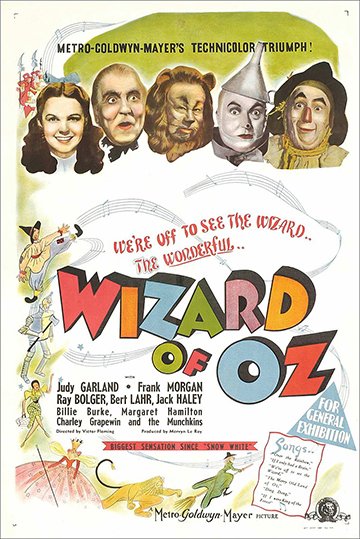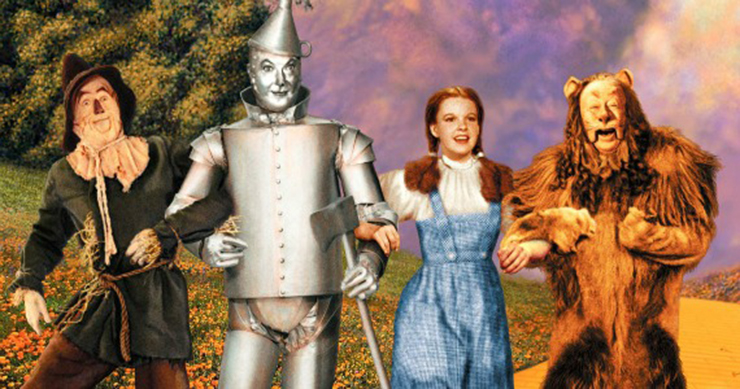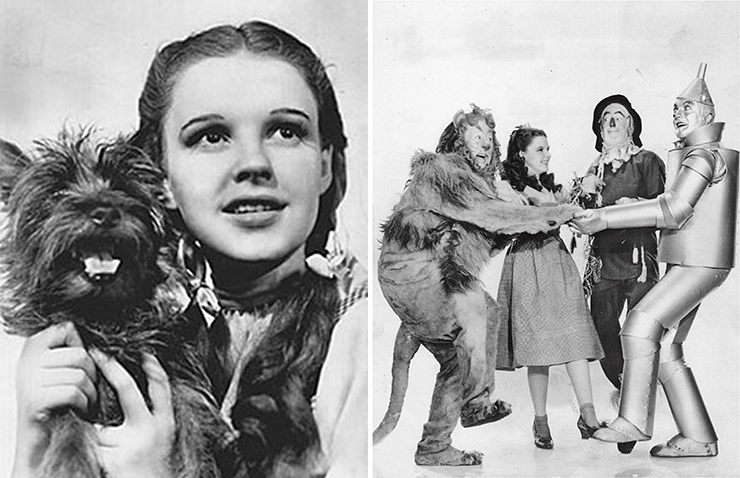
Wizard of oz movie poster.
What exactly is a “classic?”
Speaking artistically, a “classic” is a work of art created in the past that continues to draw an audience in present day.
For example, the conventional wisdom that has historically separated Western ‘folk’ music and ‘classical’ music is rooted in the idea that folk music is music that was popular to a people or time period but is no longer played with any regularity. William Byrd was the Elton John of Elizabethan England, but his consort music and motets are rarely heard any more. However, to this day Bach still enjoys plenty of air time.
And a classic film? Same thing. One film has staying power while others are rarely viewed past their initial release. A fine example is “The Wizard of Oz,” the epic 1939 fantasy which has continued to be screened in homes and theaters for generations.
A classical "twist" was applied to the classic movie at the Knight Concert Hall, Saturday, July 14, 2018, and Dorothy Gale, better known simply as “Dorothy,” never sounded better.
The Knight was host to a showing of Oz that combined tech and imagination with classical musical sensibilities, projecting the remastered film onto a huge screen while on stage the terrific Miami Symphonic Studio Orchestra played the original score.
Under the skillful baton of maestro Constantine Kitsopoulos, the orchestra performed entirely new transcriptions of the tuneful Wizard of Oz music (lyrics by E. Y. Harburg and music by Harold Arlen and Herbert Stothart) while Dorothy (Judy Garland), Scarecrow (Ray Bolger), the Tin Man (Jack Haley), the Cowardly Lion (Burt Lahr) and Dorothy's little dog Toto (Terry) battled the Wicked Witch of the West (Margaret Hamilton) as they journeyed to the land of Oz for a brain, a heart, some courage and a way back home to Kansas.
The Oscar-winning Wizard of Oz was a technical marvel for MGM, with such innovations as morphing from sepia-toned Kansas to technicolor Oz, and the wonderfully realized and appropriately scary tornado. The vividly restored images backed by a full blown (Ah! A pun that fell right out of the sky!) orchestra made for quite an event, breathing new life into L. Frank Baum’s original story.
Live music is no stranger to the cinema. Live performances, usually underscored by a single piano but, for big pictures, a complete orchestra, dominated the industry in the silent film era. More recently, an original score by Carmine Coppola was composed for the restored Abel Gance 1927 silent epic “Napoléon,” the film showing with live orchestra in several US theaters during the early 1980s.

“Over the Rainbow,” almost eliminated by studio execs after initial test screenings, is one of the most beloved songs in film history. When you hear Garland sing it with 22 violins behind her, it’s thrilling. The big percussion as the quartet entered Emerald City was spectacular, as was the entire opus, rich with the iconic texture of a 1930s vintage film score.
One can only imagine and hope to see and hear classics like “Carousel,” “My Fair Lady,” “The Music Man,” “The Sound of Music” and others that would knock it out of the ballpark with a live orchestra propelling the score. No doubt the financing of such would be tricky as this is a costly venture.
Like all classic films, Oz also had some classic lines. This exchange between Dorothy and the Scarecrow brought some hearty laughter:

DOROTHY: How can you talk if you haven't got a brain?
SCARECROW: I don't know. But some people without brains do an awful lot of talking, don't they?
Amid the block-buster special effects driven films being produced today, Oz held up beautifully on the big screen for the full house of children and adults attending. The future of films accompanied by live orchestra would be good for you, and your little dog, too!
 MAIN MENU
MAIN MENU

